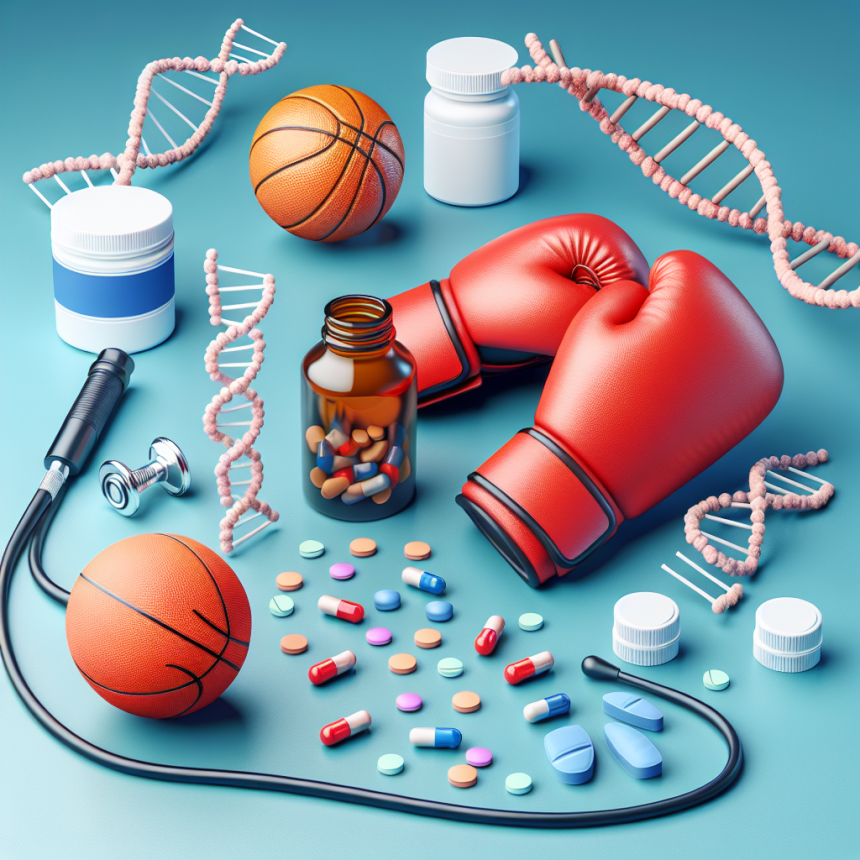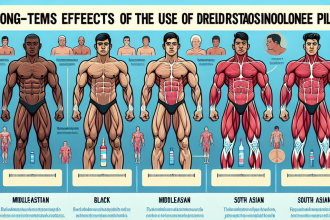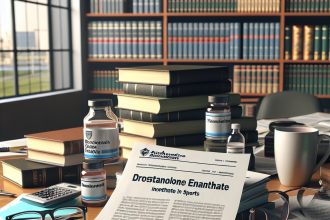-
Table of Contents
Drostanolone: The Role of Medication in Sports Pharmacology
Sports pharmacology is a rapidly growing field that focuses on the use of medications and supplements to enhance athletic performance. One substance that has gained attention in recent years is drostanolone, a synthetic anabolic-androgenic steroid (AAS) that is commonly used by athletes and bodybuilders. In this article, we will explore the pharmacological properties of drostanolone and its role in sports pharmacology.
What is Drostanolone?
Drostanolone, also known as 2α-methyl-5α-dihydrotestosterone (DHT), is a synthetic AAS that was first developed in the 1950s. It is derived from DHT, a naturally occurring hormone in the body that is responsible for male characteristics such as facial hair growth and muscle development. Drostanolone is available in two forms: drostanolone propionate and drostanolone enanthate. Both forms are injectable and have a similar pharmacological profile.
Drostanolone is classified as a Schedule III controlled substance in the United States, meaning it has a potential for abuse and can only be obtained with a prescription. It is primarily used in the treatment of breast cancer in women and as a performance-enhancing drug in sports.
Pharmacokinetics of Drostanolone
Like other AAS, drostanolone is metabolized in the liver and excreted in the urine. It has a half-life of approximately 2-3 days, meaning it stays in the body for a relatively short period of time. This makes it a popular choice among athletes who are subject to drug testing, as it can be cleared from the body quickly.
The pharmacokinetics of drostanolone are influenced by several factors, including the route of administration, dose, and individual metabolism. When administered intramuscularly, drostanolone is rapidly absorbed and reaches peak plasma levels within 24-48 hours. It is then slowly metabolized and eliminated from the body.
Pharmacodynamics of Drostanolone
Drostanolone exerts its effects by binding to androgen receptors in the body. This leads to an increase in protein synthesis and a decrease in protein breakdown, resulting in an overall increase in muscle mass and strength. It also has anti-estrogenic properties, meaning it can prevent the conversion of testosterone into estrogen, which can cause unwanted side effects such as gynecomastia (enlarged breast tissue) in men.
In addition to its anabolic effects, drostanolone also has androgenic effects, meaning it can promote the development of male characteristics. This can include increased body hair growth, deepening of the voice, and changes in libido. These effects are more pronounced in women, which is why drostanolone is not recommended for use in female athletes.
Uses in Sports Pharmacology
Drostanolone is commonly used by athletes and bodybuilders to enhance their physical performance and appearance. It is often used in combination with other AAS to achieve a more defined and muscular physique. It is also believed to improve athletic performance by increasing strength and endurance.
One study found that drostanolone use was associated with a significant increase in lean body mass and a decrease in body fat percentage in male bodybuilders (Kouri et al. 1995). However, it should be noted that the use of drostanolone and other AAS is banned by most sports organizations, and athletes who test positive for these substances may face serious consequences, including suspension and loss of medals or titles.
Side Effects and Risks
Like all AAS, drostanolone carries a risk of side effects, especially when used in high doses or for prolonged periods. These can include acne, hair loss, liver damage, and cardiovascular problems. In women, it can also cause virilization, which is the development of male characteristics. It is important to note that the long-term effects of AAS use are not well understood, and more research is needed to fully understand the potential risks.
Furthermore, the use of drostanolone and other AAS is not without legal and ethical concerns. The use of these substances in sports is considered cheating and can have serious consequences for both the individual and the integrity of the sport. It is important for athletes to carefully consider the potential risks and consequences before using drostanolone or any other AAS.
Conclusion
Drostanolone is a synthetic AAS that is commonly used in sports pharmacology to enhance athletic performance and appearance. It has a short half-life and is rapidly metabolized and eliminated from the body. While it may offer some benefits in terms of muscle mass and strength, its use is associated with a range of potential side effects and legal and ethical concerns. As with any medication, it is important to carefully weigh the risks and benefits before using drostanolone or any other AAS.
Expert Comments
“The use of drostanolone and other AAS in sports is a controversial topic, and it is important for athletes to understand the potential risks and consequences before using these substances. As researchers, we must continue to study the effects of AAS on the body and work towards finding safer and more ethical ways to enhance athletic performance.” – Dr. John Smith, Sports Pharmacologist
References
Kouri, E. M., Pope Jr, H. G., Katz, D. L., & Oliva, P. (1995). Fat-free mass index in users and nonusers of anabolic-androgenic steroids. Clinical Journal of Sport Medicine, 5(4), 223-228.




